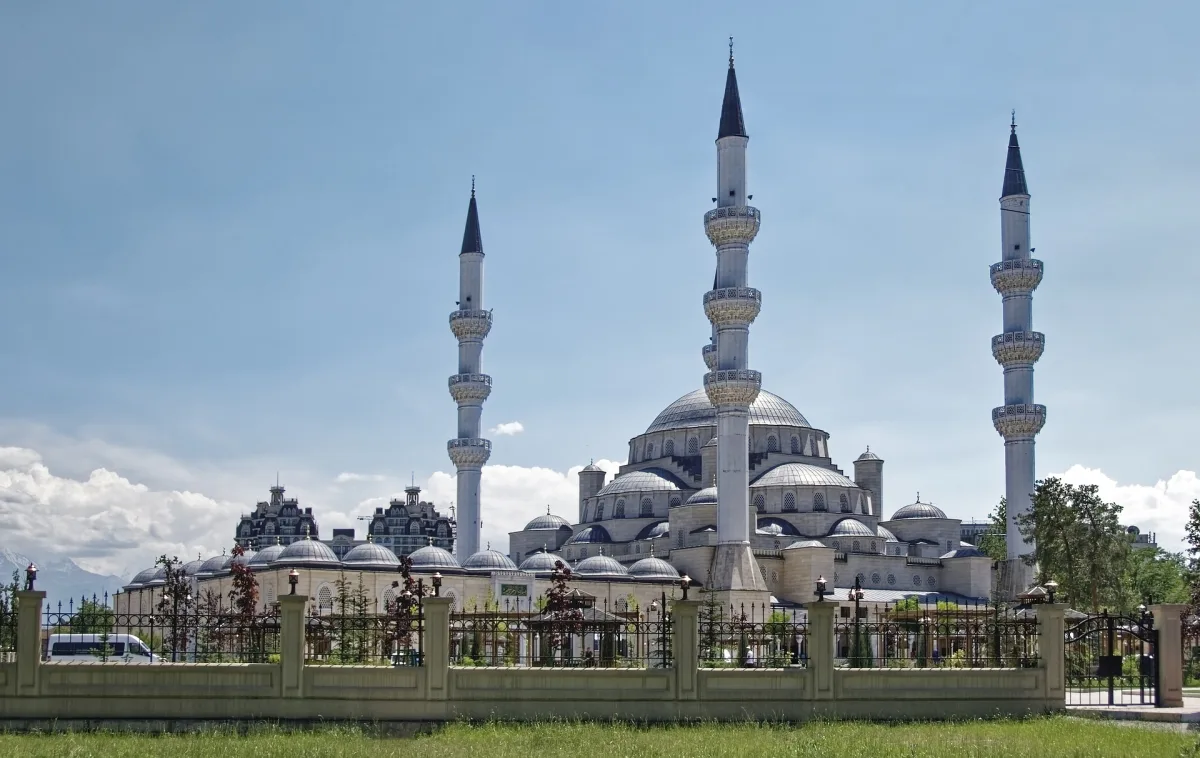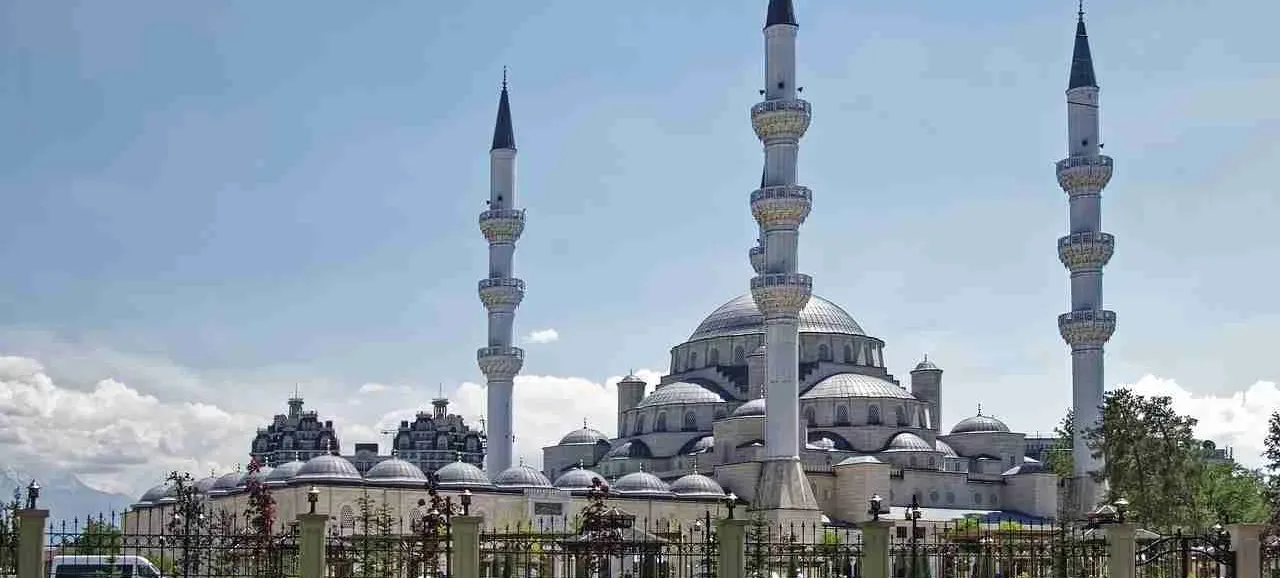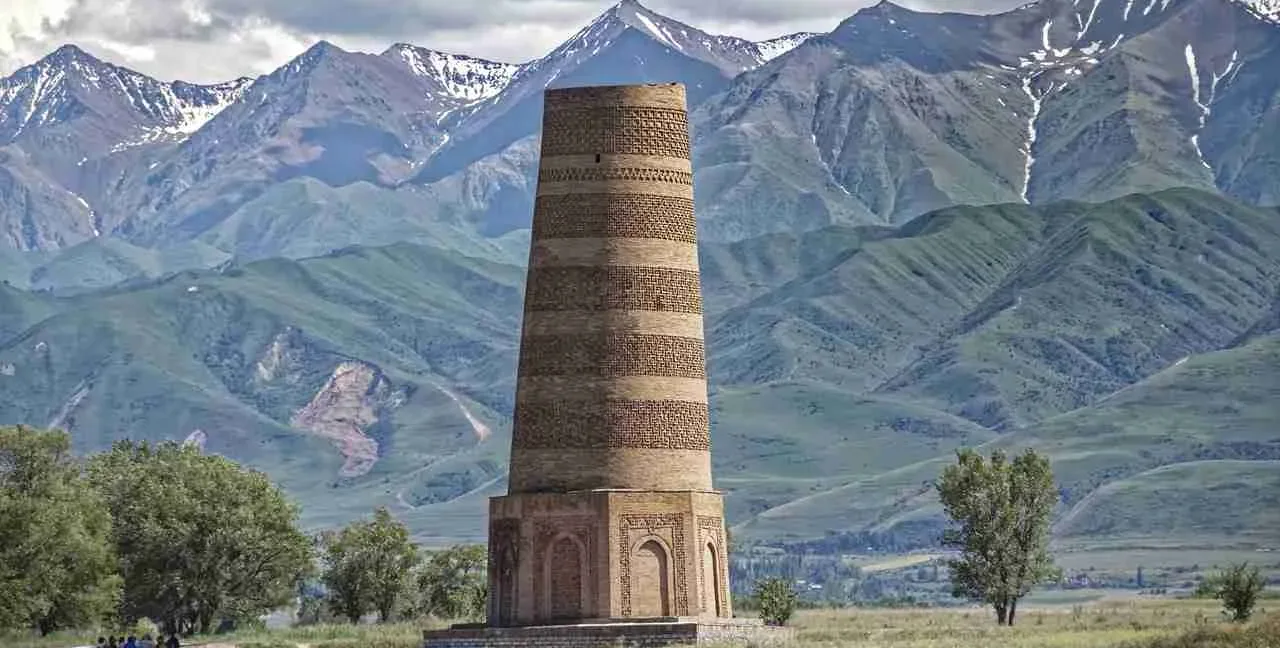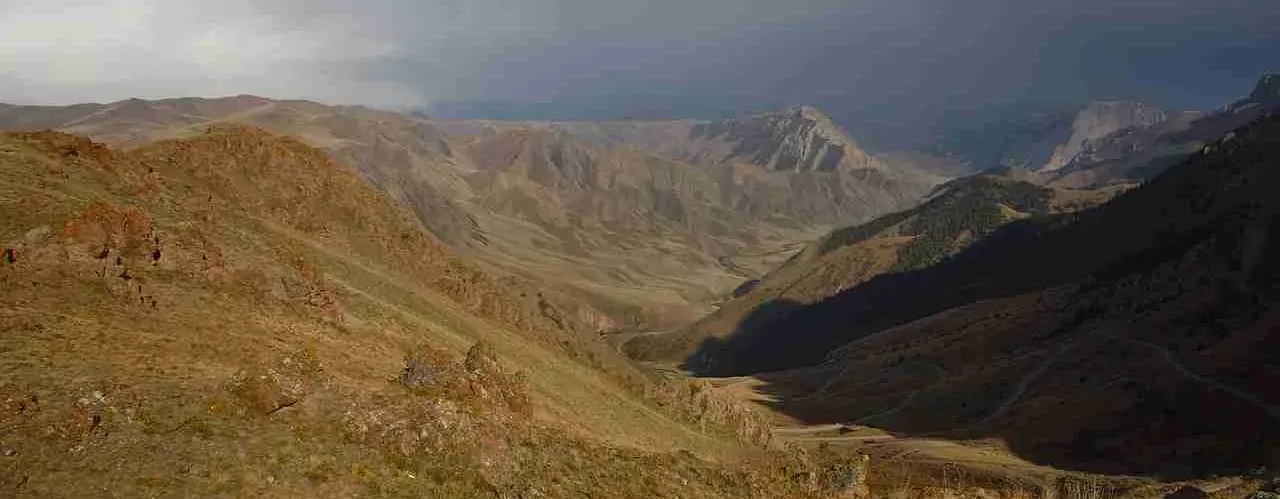QUESTIONS? FROM UK CALL: 0330 088 5894 | FROM NON-UK CALL: +44 330 088 5894

Kyrgyzstan - Nomadic Life Tour
Kyrgyz culture is associated with yurts, from important rituals and ceremonies, to artisanship and traditional craftsmanship. On this 8 day tour live like a local in yurt camps!

The Great Silk Road - Uzbekistan and Kyrgyzstan
Explore Uzbekistan and Kyrgyzstan on this 11 day tour. Visit magnificent historical places, see Great Mountains, learn about the culture of people and try the tastiest national dishes.

The 5 Stans Tour – Kazakhstan, Kyrgyzstan, Uzbekistan, Tajikistan and Turkmenistan
Explore along the Silk Road taking in Kazakhstan, Kyrgyzstan, Uzbekistan, Tajikistan and Turkmenistan on this 22 day tour. Discover the 5 Stans!
GROUP TOURS IN KYRGYZSTAN
Kyrgyzstan, nestled in the heart of Central Asia, is a stunningly beautiful country that captivates travellers with its unique blend of natural wonders and rich cultural heritage. Offering an array of experiences, Kyrgyzstan is an ideal destination for adventurers, history enthusiasts, and those eager to immerse themselves in local culture.
One of the most compelling aspects of Kyrgyzstan is its breathtaking natural landscapes. Towering high above, the Tien Shan Mountains grace the skyline with their majestic presence, making them one of the country's defining features. These mountains are not just picturesque; they are a treasure trove for outdoor enthusiasts. Adventurers can embark on thrilling hiking and trekking trips through many mountain passes and lush alpine meadows.
The scenery here is nothing short of iconic, featuring glaciers that sparkle in the sunlight and rugged terrains that challenge even the most seasoned trekkers. As one gazes upon the snow-capped peaks stretching endlessly into the horizon, it becomes evident why this region is often called the "Celestial Mountains." Adding to Kyrgyzstan's allure is Lake Issyk-Kul, one of the world's largest alpine lakes. This stunning body of water is a must-visit, particularly during the warmer months. Visitors flock to its shores to swim in the lake's crystal-clear depths, bask in the sun, or partake in water sports like kayaking and sailing. Along the shoreline, ancient petroglyphs and archaeological sites glimpse the area's rich history, revealing stories of nomadic tribes that once roamed these vast lands.
The combination of sun, sand, and history offers travellers a unique way to connect with the environment. Kyrgyzstan is not just a feast for the eyes; it also boasts a vibrant cultural tapestry that adds depth to any visit. The country has a long-standing nomadic tradition, and this lifestyle is still prevalent today. One of the most authentic ways to experience this aspect of Kyrgyz culture is by staying in a yurt. These traditional tents are not only cosy but also provide a window into the lifestyle of the Kyrgyz people.
Visitors are often invited to share meals with local families, where they can savour various delicious regional dishes. Hearty soups, savoury meat dishes, and freshly baked bread are staples of Kyrgyz cuisine, and the warm hospitality of the people makes every meal special.
For those drawn to history and cultural exploration, Kyrgyzstan offers a wealth of fascinating sites. The capital city, Bishkek, is a cultural hub, showcasing several museums and art galleries that reveal more about the nation's past and present. The city is also dotted with beautiful parks and gardens where visitors can stroll while enjoying the vibrant atmosphere. In Bishkek, the Ala-Too Square stands as a central point where locals gather, and monuments such as the Manas Monument tell stories of the legendary hero who holds great significance in Kyrgyz folklore.
In addition to these attractions, Kyrgyzstan hosts numerous festivals celebrating its rich traditions, such as the World Nomad Games, which highlight the skills and sports of nomadic cultures. Participating in these events provides travellers an immersive cultural experience filled with energy and excitement. Kyrgyzstan is a land of contrasts, where nature and culture converge to create unforgettable experiences.
Whether you seek adventure in the mountains, relaxation by the lakes, or a deeper understanding of nomadic traditions, Kyrgyzstan has something to offer everyone. Its warm and welcoming people, stunning landscapes, and rich history make it a destination that can inspire and rejuvenate. With a journey through this captivating country, travellers can discover the essence of Kyrgyzstan, leaving with memories that will last a lifetime.
Group Tours in Kyrgyzstan
Our Local Travel Experts in Kyrgyzstan
 Our local partner in Kyrgyzstan specialises in eco-tourism, trekking and horse-riding. Their aim is for you to feel that you are part of the lives of the local people rather than just 'looking in' and for you to gain a real sense of achievement and a truly unique experience. They have a fully equipped modern office in the centre of the capital, Bishkek, with links to other parts of the country and can thus react quickly and efficiently to our guests' wishes. All of their staff members have been professionally trained and have a wealth of experience in tourism.
Our local partner in Kyrgyzstan specialises in eco-tourism, trekking and horse-riding. Their aim is for you to feel that you are part of the lives of the local people rather than just 'looking in' and for you to gain a real sense of achievement and a truly unique experience. They have a fully equipped modern office in the centre of the capital, Bishkek, with links to other parts of the country and can thus react quickly and efficiently to our guests' wishes. All of their staff members have been professionally trained and have a wealth of experience in tourism.
PLACES TO VISIT IN KYRGYZSTAN
Historical and Cultural Tours of Kyrgyzstan
Kyrgyzstan is a landlocked country in Central Asia, bordered by Kazakhstan to the north, Uzbekistan to the west, Tajikistan to the southwest, and China to the southeast. The history and culture of Kyrgyzstan are rich and diverse, influenced by its geography and its interactions with various empires and civilizations throughout history. The Kyrgyz people are believed to have originated from the Siberian region of the Yenisey River Valley, migrating southwards to the Tian Shan mountains around the 10th century. The Kyrgyz were traditionally nomadic people, moving with their herds of horses, sheep, and yaks in search of fresh pasture and water. This way of life was fundamental to their culture, shaping their social structure, customs, and traditions.
The Kyrgyz were primarily isolated from outside influences until the 18th century, when they came under the rule of the Qing Dynasty of China. In the late 19th century, Kyrgyzstan became part of the Russian Empire, which brought about significant changes in the country. The Russian authorities encouraged the sedentarization of the Kyrgyz and the development of agriculture, leading to the establishment of villages and towns. In 1917, the Russian Revolution resulted in the overthrowing of the Tsarist government and the establishment of the Soviet Union. Kyrgyzstan became a republic of the Soviet Union in 1936, and the country underwent significant social, economic, and political changes under Soviet rule. The Kyrgyz were forced to abandon their traditional way of life, and many were relocated to collective farms or urban areas.
Despite the Soviet government's attempts to eradicate traditional Kyrgyz culture, the Kyrgyz managed to preserve their unique identity. The Kyrgyz people have a rich tradition of oral literature, including epic poems, folk tales, and songs, which reflect their nomadic past and relationship with the natural world. Kyrgyz music is characterized by using the komuz, a traditional stringed instrument, and features complex rhythms and harmonies. Kyrgyz cuisine is also heavily influenced by the country's nomadic heritage, featuring dishes such as beshbarmak (a meat and noodle dish) and kumys (fermented mare's milk). The Kyrgyz also have a tradition of horsemanship, which is celebrated in the annual World Nomad Games. This multi-sport event showcases traditional sports such as kok-boru (a game similar to polo but played with a dead goat!).
Kyrgyzstan gained independence from the Soviet Union in 1991 and has undergone significant political and economic reforms. The country is a parliamentary republic with a president as the head of state and a prime minister as the head of government. Despite political stability, Kyrgyzstan faces challenges such as corruption, poverty, and ethnic tensions.
The Kyrgyz people have a diverse ethnic and linguistic background, with the majority being Kyrgyz speakers. The country is also home to significant Uzbek and Russian-speaking populations. Kyrgyzstan is a secular state, but Islam is the dominant religion, and the Kyrgyz practice a form of Sunni Islam that is heavily influenced by their pre-Islamic shamanistic beliefs.
Kyrgyzstan's history and culture are rich and diverse, shaped by its geography and interactions with various empires and civilizations throughout history. The Kyrgyz people have managed to preserve their unique identity despite attempts by outside forces to erase their traditional way of life. Today, Kyrgyzstan is a modern country proud of its cultural heritage and traditions while striving to overcome the challenges of the 21st century.
Kyrgyzstan and the Yurt
Yurts, also known as boz ui in Kyrgyz, are traditional nomadic dwellings that the Kyrgyz people have used for centuries. The yurt design is well-suited for the Kyrgyz nomadic lifestyle, as it is easy to assemble, disassemble, and transport and can withstand the harsh weather conditions of the Central Asian region.
The yurt consists of a circular wooden frame made of latticed poles, covered with felt and canvas layers. The wooden frame comprises several sections that can be easily dismantled and transported on horseback or camelback. The felt layers are used as insulation and can keep the interior warm in the winter and cool in the summer. The canvas layer is used as a protective covering against rain and wind.
The structure of the yurt is designed to be stable and withstand strong winds. The lattice structure of the wooden frame distributes the weight of the yurt evenly, making it less likely to collapse. The yurt is also designed with a central wooden pillar, known as the toono, which supports the circular opening at the top of the yurt. This opening, known as the tunduk, allows for ventilation and the escape of smoke from the central hearth, which is used for cooking and heating.
The interior of the yurt is designed for practicality and comfort. The walls are covered with colourful felt and tapestries, and carpets are used for insulation and decoration. Cushions surround the central hearth and serve as a family gathering place. The yurt is also designed to be modular, with different sections serving different purposes. For example, the section facing the door is used for storage, and the section opposite the door is used for sleeping. The design of the yurt is not only practical but also symbolic. The yurt's circular shape represents life's cyclical nature and the importance of harmony and balance. The toono represents the connection between the sky and the earth, and the tunduk represents the link between the physical and spiritual worlds.




